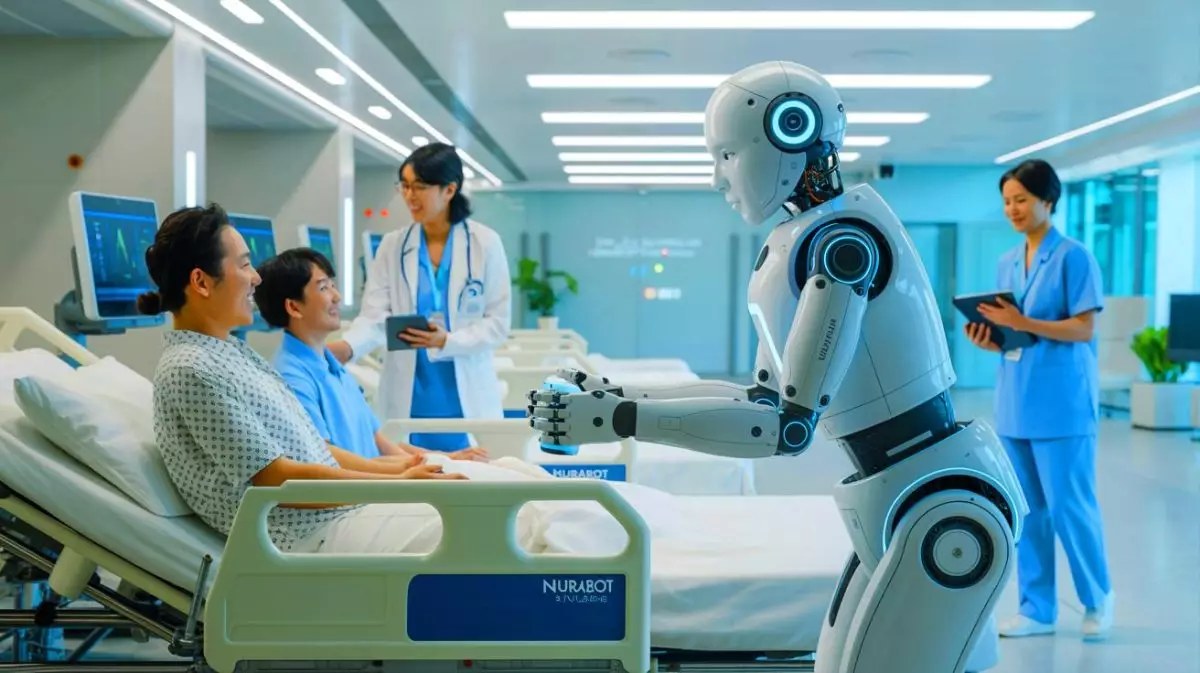The image of a hospital is often one of sterile hallways, bustling nurses, and the hum of medical machinery. But in a quiet, yet profound, revolution, this image is changing. Driven by a blend of cutting-edge technology and a new focus on patient-centric care, hospitals are becoming “smart.” A smart hospital is more than just a building with advanced equipment; it’s a seamlessly connected ecosystem where technology, data, and human expertise converge to create a safer, more efficient, and more personalized healthcare experience. This shift is not just an upgrade—it’s a complete reimagining of how we deliver care, promising to solve some of the healthcare industry’s most pressing challenges.
What Makes a Hospital “Smart”?
At its core, a smart hospital leverages the Internet of Medical Things (IoMT) to create a connected and intelligent environment. This network includes everything from wearable sensors on patients to smart beds and AI-powered diagnostic tools. Data from these devices are collected, analyzed, and used to provide real-time insights, automating routine tasks and freeing up clinicians to focus on what matters most: the patient. The result is a facility that operates with unprecedented efficiency and precision.
One of the most immediate impacts is on patient monitoring. Instead of manual check-ins, continuous vital sign monitoring can be done by smart sensors. A wristband can track a patient’s heart rate, blood oxygen levels, and temperature, transmitting the data directly to a central dashboard. This not only reduces the workload on nurses but also allows for immediate alerts in case of a critical change in a patient’s condition, enabling rapid intervention and potentially saving lives.
Revolutionizing Patient Care with Technology
The smart hospital’s impact extends to every stage of a patient’s journey, from admission to post-discharge care.
- Personalized and Proactive Care: A patient’s unique data profile can be used to tailor treatment plans with greater accuracy. AI-powered analytics can analyze a patient’s medical history, genetic data, and real-time vital signs to predict potential complications, such as the risk of a fall or the onset of sepsis. This shift from reactive to proactive care allows medical staff to intervene before a crisis occurs. For example, a smart bed might detect subtle changes in a patient’s movements and alert a nurse to a potential fall risk, allowing them to adjust the bed or assist the patient before they even try to get up.
- Enhanced Diagnostics and Treatment: The integration of AI in diagnostic tools is a game-changer. AI algorithms can analyze medical images like X-rays, CT scans, and MRIs with a speed and accuracy that can assist radiologists in spotting subtle anomalies that might be missed by the human eye. This leads to earlier and more accurate diagnoses, especially for diseases like cancer. Furthermore, robotic surgery systems allow surgeons to perform complex procedures with greater precision and smaller incisions, leading to reduced blood loss, shorter hospital stays, and faster recovery times for patients.
- Seamless Hospital Operations: A smart hospital is an operational marvel. Automated guided vehicles (AGVs) can navigate the hospital’s corridors, autonomously delivering lab samples, medications, and supplies. This reduces manual labor and ensures that critical supplies are available exactly when and where they are needed. Furthermore, smart resource management systems can track the location of equipment like wheelchairs and infusion pumps, ensuring staff can find them quickly, eliminating wasted time and frustration. The efficiency gains from these systems allow hospitals to serve more patients with the same or even fewer resources.
The Role of Data and Cybersecurity
The foundation of the smart hospital is data. The vast amount of information collected—from patient records and IoMT devices to operational metrics—is a valuable asset. However, it also presents a significant challenge: cybersecurity. Protecting sensitive patient data is paramount. Smart hospitals must invest heavily in robust cybersecurity measures to prevent data breaches and protect patient privacy. This includes end-to-end encryption, multi-factor authentication, and continuous monitoring of network activity for any suspicious behavior. The trust of the public depends on the hospital’s ability to safeguard their most private information.
Challenges on the Road to Smart Healthcare
While the promise of smart hospitals is immense, the transition is not without its hurdles. The initial investment in technology is substantial, and many healthcare organizations, particularly smaller ones, may find it difficult to justify the cost. There is also a significant need for a highly skilled workforce that can manage and maintain this complex technology. Training medical professionals to use these new tools effectively and ethically is crucial to a successful rollout. Finally, integrating disparate technologies from different vendors can be complex and requires a clear, well-thought-out strategy.
The Human Element in a Tech-Driven World
Despite the rise of smart technology, the human element remains at the heart of healthcare. Technology is a tool, not a replacement for empathy, compassion, and critical thinking. The goal of a smart hospital is not to replace doctors and nurses with robots and AI, but to empower them. By automating repetitive tasks, technology frees up clinicians to spend more time with patients, building stronger relationships, providing comfort, and focusing on the personalized care that a machine can’t deliver. A smart hospital enhances the human connection, allowing it to flourish in a more efficient and data-rich environment.
Conclusion
The smart hospital is more than a technological fad; it’s the inevitable next step in the evolution of healthcare. By leveraging the power of connected devices, AI, and data analytics, these institutions are not only improving operational efficiency but are also delivering a level of patient care that was once unimaginable. As the technology becomes more accessible and the industry adapts, the smart hospital will become the standard, paving the way for a future where healthcare is not just reactive but predictive, personalized, and truly revolutionary.

